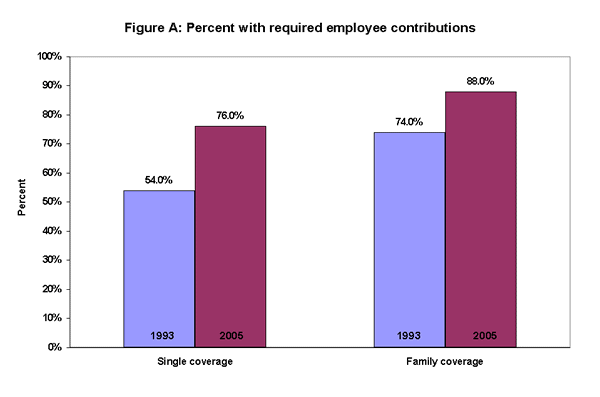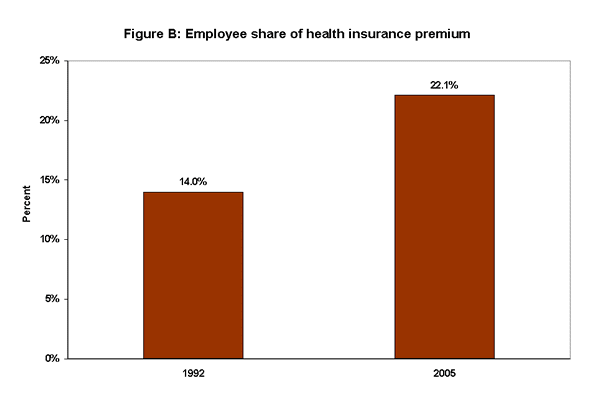See Snapshots Archive.
This week’s Snapshot previews data to be presented as part of the forthcoming The State of Working America 2006/07.
Snapshot for August 16, 2006.
Employers shift health insurance costs onto workers
Fewer employees receive health insurance through their employers now than in the past, as coverage has declined from 61.5% in 1989 to 58.9% in 2000 and down to 55.9% in 2004 (the latest data available). Less well known is the fact that those who still receive employer-provided coverage are now paying a larger share of those insurance costs.
One dimension of this trend can be seen in Figure A, which shows, for both single and family coverage, the share of employees who are required to contribute their own money to help cover insurance premiums. In 1993 about half (54%) of workers in the private sector with individual coverage were required to pay for some of the insurance costs; by 2005 that share had risen to 76%. Almost all workers with family coverage (88%) are required to pay some of the insurance premium out of their own pockets.

How much more employees pay now than in the past for health insurance premiums is answered in Figure B, which details the employee share of health premiums for all (both individual and family) coverage in 1992 and 2005. The employee share rose from 14.0% in 1992 to 22.1% in 2005. We estimate that this shift in cost-sharing caused employees to pay for half of the growth of employer-provided health insurance premiums over the 1992 to 2005 period. This shift onto employees for basic premium costs does not include any of the higher deductibles or co-pays paid by employees that also have occurred over this same time period.

